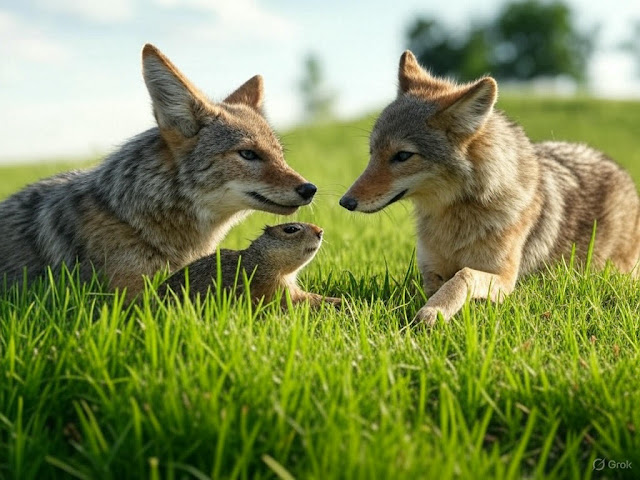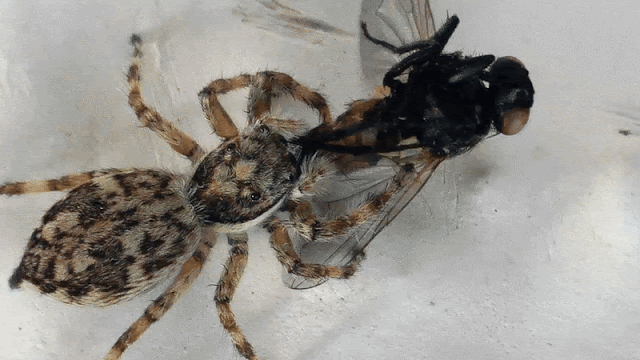Hello folks who wonder if the really rich and the really poor are similar in that they both eat just one meal a day,
We live in a news cycle that is filled with stories of gore and violence. So, when you come across a news story about something unexpectedly harmonious, it just makes you smile a little. Something that was unacceptable 100 years ago is now so common that people don't even flinch.
Case in point: seeing people sitting at the same table where one person is eating a margherita pizza and the other person is happily consuming pineapple on their pizza—without anyone pointing a gun at each other.
OR here is another one. What if I told you about a short story about a Coyote and ground squirrel that is unlike one you have never heard.
In the golden foothills where sage meets sand, a most unusual friendship blossomed between Wiley the coyote and Pip the ground squirrel. What began as curious glances across the scrubland evolved into daily games of chase—never predatory, just playful—after they'd both finished their daily foraging. Pip would dart and dodge while Wiley followed, their movements a dance of joy rather than hunt, defying the ancient laws that should have made them enemies.
 |
| Humans leave behind enough waste for us to coexist |
 |
| I heard a lot about you from Wiley. |
 |
| R.I.P Pip, you were a great friend. Wiley, get some counseling. |
After watching for a little longer, I realized that the predatory wasp had swiftly paralyzed the cricket with its ovipositor. It was now carrying the cricket back to its burrow, where it would lay an egg—giving its hatchling a fresh meal when it emerged.
 |
| It appears to be engaging in a game of peekaboo with something... or perhaps even with me? |
Compared to the familiar Western Honey Bee that we keep in hives, the Giant Honey Bee is a completely different story! These amazing bees are truly wild – humans haven't been able to domesticate them. One big reason is their nesting habit: Western Honey Bees prefer enclosed spaces, but Giant Honey Bees build their nests in the open air on tree branches. They also flourish in tropical heat and tend to be more aggressive. Seeing one of these impressive bees high in a tree was pretty exciting.
Initially, you might not realize how much is going on. From a distance, it doesn't seem like much. But that's because you need to get closer! Once I found a good vantage point, I could finally get a clear view of this colony and see them hard at work.









No comments:
Post a Comment
Did you learn something new in this post? Let us know in the comments below